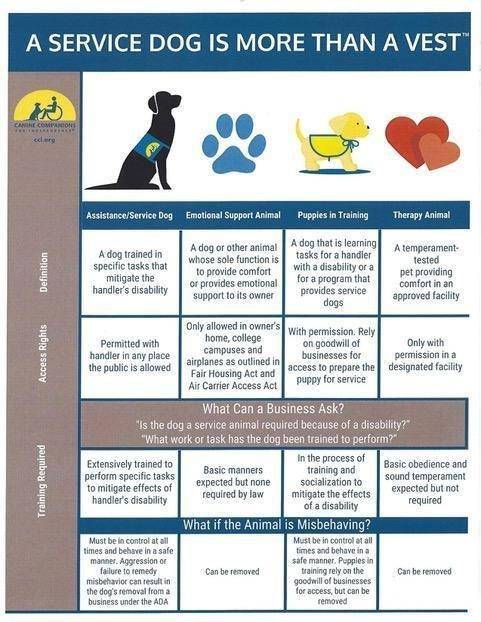There has been a noticeable growing issue with individuals visiting public grocery stores and similar locations with their pets that are not service or assistance animals.
The unsanitary factor coupled with the safety of the public is prudent in these cases. One local stated that she witnessed a shopper’s dog relieve itself on the floor of the store that they had been shopping in. Many that bring their animal into a public area where they would normally not be allowed have been falsely identifying them as service animals.
One large setback of this issue is that those that do utilize true service and assistance animals are now being looked at with a question of validity. The Service Dog Central stated that there are between 100,000 and 200,000 service dogs that are legitimate currently in the United States.
Another huge consequence of this new trend is that an animal that is truly trained to be a service may be harmed by the untrained animals that are being paraded through public spaces.
While it can be confusing to distinguish a real from a fake, one of the easiest ways to determine such is to monitor the animal’s actions and behavior. Service and assistance animals go through many, many hours of training and appear alert yet calm, will not bark and jump, and obey commands promptly.
Furthermore, there is a great difference between an emotional support animal and a service or assistance animal. Emotional support animals are not privileged with entry into a public space unless it is an airline or public housing. By definition, an emotional support animal is one that has the sole function of providing comfort and emotional support to their owner.
Business owners and other individuals are permitted to ask two questions when encountering an animal in a public space that pets are not allowed, according to the US Department of Justice. The first is if the service and assistance animal is required due to a disability and the second is to ask what it is trained to do to mitigate the disability.

